Enthusiast Overclocking For $399!
Review Summary
The ASRock X870E Taichi Lite is a $399 powerhouse with a VRM setup (24+2+1, 110A SPS for VCore and SoC) that can compete with enthusiast-class boards. That’s not its only attraction; the board has a fascinating design, multiple handy features, and excellent connectivity options, with USB4 and WiFi 7 being the icing on the cake. Circling back to the price, this is a great option among X870E boards.
Hours Tested: 11

Overall
-
Performance - 9.5/10
9.5/10
-
Value - 9/10
9/10
-
Features - 8/10
8/10
-
Design - 9/10
9/10
Pros
- Premium-class 24+2+1 VRM setup
- Great price – $399 (for an X870E board)
- 21x USB ports (incl. 2x USB 40Gbps, 1x USB 20Gbps)
- 2x PCIe-5 x16
- Includes 3x thermistor cables
Cons
- X670E boards can still be much cheaper
After testing the MSI MPG X870E Carbon WiFi, it’s time for us to take a look at the ASRock X870E Taichi Lite. Don’t let the name fool you; it retains all the key features of the flagship board, just with a different aesthetic. This is the first time we’re getting a Taichi Lite variant for the high-end chipset, with the previous generation having only a B650E Taichi Lite model. Let’s dive into the review.
Key Takeaways
- The ASRock X870E Taichi Lite, priced at $399, fits into the intermediately-priced X870E boards category. It’s an E-ATX board with a top-notch VRM setup, a pleasing design, enough I/O for most, and some useful features.
- Get the Taichi Lite if you want enthusiast overclocking for a lower price, don’t need RGB, or you need the latest I/O (USB4, WiFi 7, and improved DDR5 support).
- Don’t buy the X870E Taichi Lite if your case can’t accommodate E-ATX boards. Also, you can save money by getting an X670E board if you don’t need the latest I/O or the premium VRMs.
Take a look at the specifications:
| CPU Support | AMD Ryzen 7000, Ryzen 8000, Ryzen 9000 |
| Memory Support | DDR5 8200+ MT/s (OC) |
| PCIe Slots | 2x PCIe 5.0 x16 (supporting x16 or x8/x8) |
| M.2 Slots | 1x PCIe 5.0 (x4), 3x PCIe 4.0 (x4) |
| SATA Ports | 6x 6Gbps |
| Audio | Realtek® ALC4082 Codec |
| Network | 1x Realtek RTL8126 5G LAN, WiFi 7 |
| USB Ports | 21 ports, including 2x USB 40Gbps Type-C (Rear) |
| Size | EATX Form Factor: 30.5 cm x 26.7cm |
Packaging and Unboxing
The motherboard comes in a standard cardboard box.
There are little to no details about the board up front, while the back of the board has the specifications, certification marks and compliance symbols.

Inside the box, you get:
- 4 x SATA Data Cables
- 1 x ASRock WiFi 2.4/5/6 GHz Antenna
- 1 x ARGB Splitter Cable
- 3 x Thermistor Cables
Design
If you’re not into RGB, you won’t miss anything with the Taichi Lite (except for some other minor features) compared to the Taichi. It presents a mostly comparable aesthetic (without RGB, of course) with a black and silver design. The PCB is mostly black, while the heatsinks are primarily silver.
ASRock has played around a bit, and so the motherboard features different design elements. The I/O and PCH heatsinks feature the signature cog prints, brushed texture is being used, and multiple stripes are running across the different heatsinks. I know looks are subjective, but for me, the design absolutely nails the spot, one of my personal favorites!

The X870E chipset features two Promontory 21 chips connected by a PCIe Gen 4 x4 bus. These chips power features like most of the USB and SATA ports, 3x of the M.2 slots, audio, and WiFi.
Meanwhile, the socket gives us the DIMM slots, the PCIe 5.0 connections, USB4 (and 2x of the rear 10Gbps ports), the only Gen 5 M.2 port, and the HDMI port. Also coming from the CPU are the NCT6796D-S and NCT6686D chips, super I/O controllers used to monitor voltages, temperatures, fan speeds, and more.
The motherboard is built on an 8-layered PCB with 2oz copper and uses “server-grade” material.
Power Delivery To Socket
The ASRock X870E Taichi Lite features a 24+2+1 (VCore+GT+Aux) power design with 110A phases for both the CPU and memory. That totals 2550A available to the CPU and 2770A overall.
ASRock is using R2209004 HBD S2347UBU SPS stages and upgraded capacitors, which provide 1000µF and a 20K-hour lifespan (which is labeled on them). Renesas’ RAA 229628 provides the PWM control for these stages.

Power from the PSU comes through the dual 8-pin connectors. ASRock is using “Hi-Density Power Connectors,” which it claims can withstand more current than traditional 8-pin connectors. This is an incredibly powerful setup, and it’s impressive that ASRock managed to retain it in the Lite model. Among X870E motherboards, only the MEG X870E GODLIKE has a similar setup so far, a board that will probably cost at least twice as much!
Cooling this setup is an extended “XXL” aluminum heatsink with a stacked fin design. Underneath the heatsink, we have 9W/mK thermal pads that align over the stages and the inductors (shown in the 2nd image). Despite the beefy power design, no heat pipe or fan is being used here, but I think the design should suffice.
DIMM Slots

Beside the upper Gen 4 M.2 slot lie the 4x DIMM slots powered by the CPU. The support is rated at DDR5-8200+ (OC) and you can install up to 256GB of memory on here. It supports error correction (ECC) memory as well as both XMP and EXPO profiles.

It’s important to note that excessive speeds like DDR5-8200 may not be the best pairing for the Ryzen 9000 chips. AMD’s tuning to the memory controller on these new CPUs means it’s possible (in best-case scenarios) to run the memory at DDR5-6400 at a 1:1 ratio between the memory and its controller. This is the best configuration at the moment, with minimal latency.
Though speeds like DDR5-8200 will perform more or less around the DDR5-6400 mark, the extra cost doesn’t make it worthwhile.
– Dr. Usman Saleem
Storage
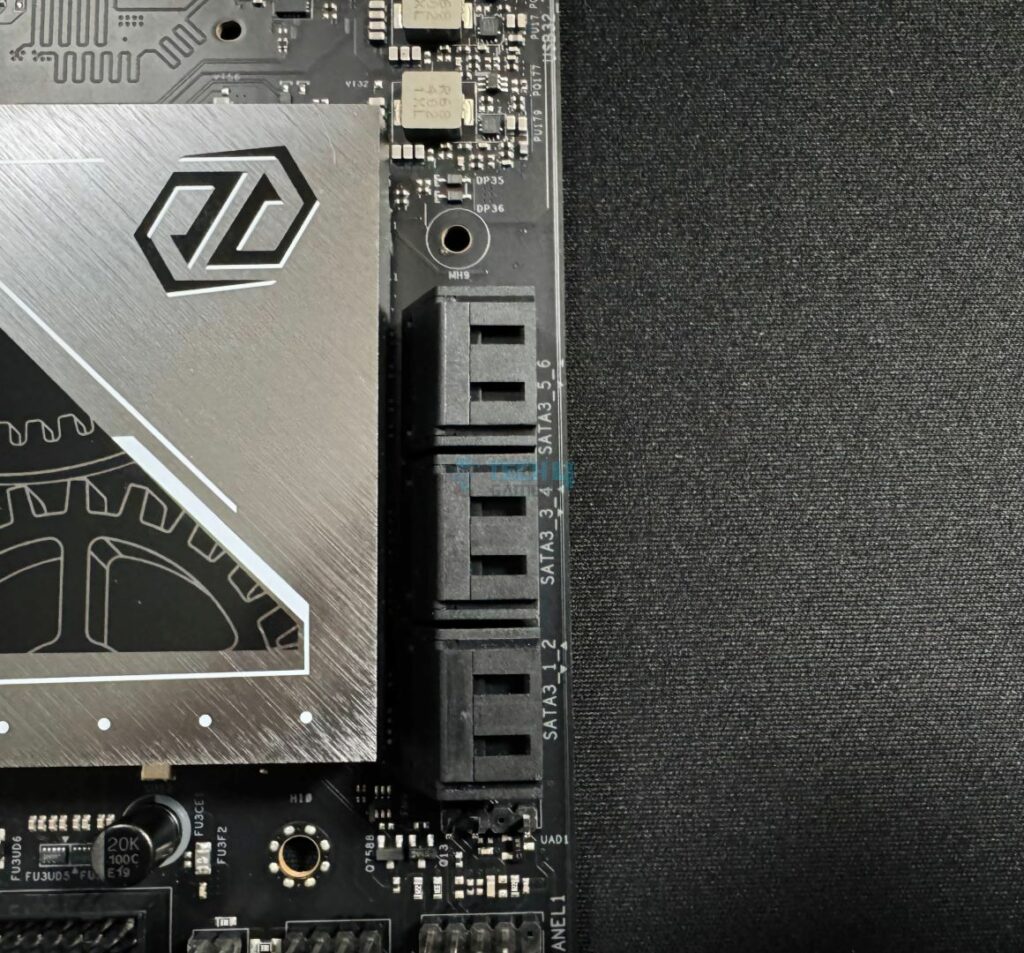
On the storage front, we get six 6Gbps SATA ports coming from the two silicon.
Note: I’ll refer to the primary M.2 slot (the Gen 5 one) as M2_1 and the Gen 4 slot beside the DIMM slots as M2_2.
There are also 4x M.2 slots, one running on PCIe gen 5 (primary)–coming from the socket. All the slots support type 2280 drives. The remaining three M.2 are Gen 4 and come from the chipset. As expected, there is a separate M.2 heatsink for the M2_1 slot and then a wider one for the lower Gen 4 slot. The M2_1 heatsink is taller as it also has a stacked fin design to deal with the greater heat output of Gen 5 drives.
The thermal pads on the motherboard’s M.2 slots after the heatsinks are removed are shown above. The M2_1 heatsink features a tool-less mechanism similar to the one we saw in MSI’s MPG X870E Carbon WiFi, which is good to see. Meanwhile, the Gen 4 slots will require a screwdriver for removal and installation.
Another thing to note is that M2_1 and M2_2 feature thermal pads and heatsinks at the base, while the bottom ones using the enlarged heatsink do not. The anti-drop screws used in the enhanced M.2 heatsink should ensure you don’t lose them while putting together your build.
PCIe Connectivity

The ASRock X870E Taichi Lite features dual PCIe 5.0 slots (one functions as the primary, and the other as a PCIe x8 should you want to share bandwidth between the two). Both the slots use surface mount technology (SMT), so you don’t have to worry while installing those bulkier graphics cards. Both slots are also steel-reinforced for more strength.
Unfortunately, one of the features missing from the Lite is the PCIe EZ release for the GPU.
USB Connectivity
The board provides a total of 21 USB ports:
- 2x USB4 Type-C (Rear)
- 5x USB 3.2 Gen2 Type-A (Rear)
- 1x USB 3.2 Gen2x2 Type-C (Front)
- 7x USB 3.2 Gen1 Type-A (3 Rear, 4 Front)
- 6x USB 2.0 (2 Rear, 4 Front)

The CPU powers the 2x USB4 ports (from the ASM4242 controller) and 2x of the 10Gbps Type-A ports in the rear. All the other ports come from the chipset. Pictured above are one of the USB 3.2 Gen 1 connectors (top)(powers 2x 5Gbps ports) and the USB 3.2 20Gbps header (powers one 20Gbps port).
All the USB ports have ESD (electrostatic discharge) protection.
Network & Connectivity
The Taichi Lite supports WiFi 7 and Bluetooth 5.4. Backward compatibility also enables support for older standards (5GHz, 2.4GHz). For 6 GHz WiFi, it supports a 160MHz channel bandwidth. The antenna enables support for 2T/2R (2 transfer/2 receive) for multiple data streams and a more reliable connection. MU-MIMO technology is also supported.
For wired connectivity, the motherboard features a 5G LAN port powered by Realtek’s RTL8216 controller. ASRock is using a patented design for this port, enabling lower noise and more stable speeds. It also supports Bluetooth 5.4. Both WiFi 7 and Bluetooth 5.4 require Windows 11 build version 24H2.
Audio Solution
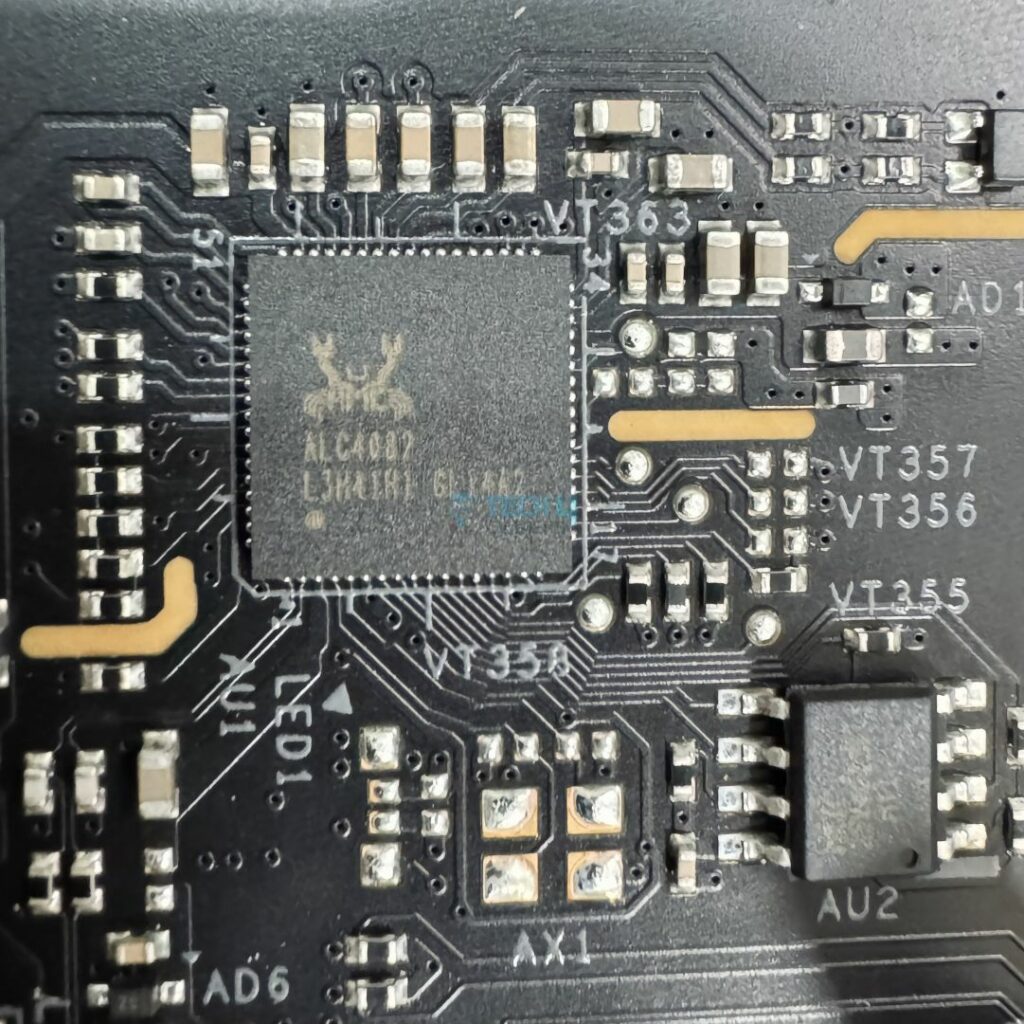
The Taichi Lite uses Realtek’s ALC4082 audio codec, which is similar to ALC4080 but offers some additional features like Content Protection. For DAC, the board uses ESS SABRE9219 with a 130dB signal-to-noise ratio, which should translate to minimal noise during playback.
Direct-drive technology enables the use of high-end headphones without the need for an external amplifier. The board features separate PCB layers for left and right audio channels and uses high-end WIMA audio capacitors for the rear outputs. Nahimic audio drivers are also supported.
Internal Connectors
Listed below are the connectors on the board:
- 3x Thermistor Cable Headers
- 1x Power LED and Speaker Header
- 1x RGB LED Header
- 3x Addressable LED Headers
- 2x CPU Fan Connector
- 4x Chassis Fan Connectors (4-pin)
- 1x AIO Pump Fan Connector (4-pin)
- 1x Water Pump Fan Connector (4-pin)
- 1x 24 pin ATX Power Connector
- 2x 8 pin 12V Power Connectors
- 1x Front Panel Audio Connector (15μ Gold Audio Connector)
- 2x USB 2.0 Headers (Support 4 USB 2.0 ports)
- 2x USB 3.2 Gen1 Headers (Support 4 USB 3.2 Gen1 ports)
- 1x Front Panel Type C USB 3.2 Gen2x2 Header (20 Gb/s)
- 1x Dr. Debug with LED
- 1x Power Button with LED
- 1x Reset Button with LED
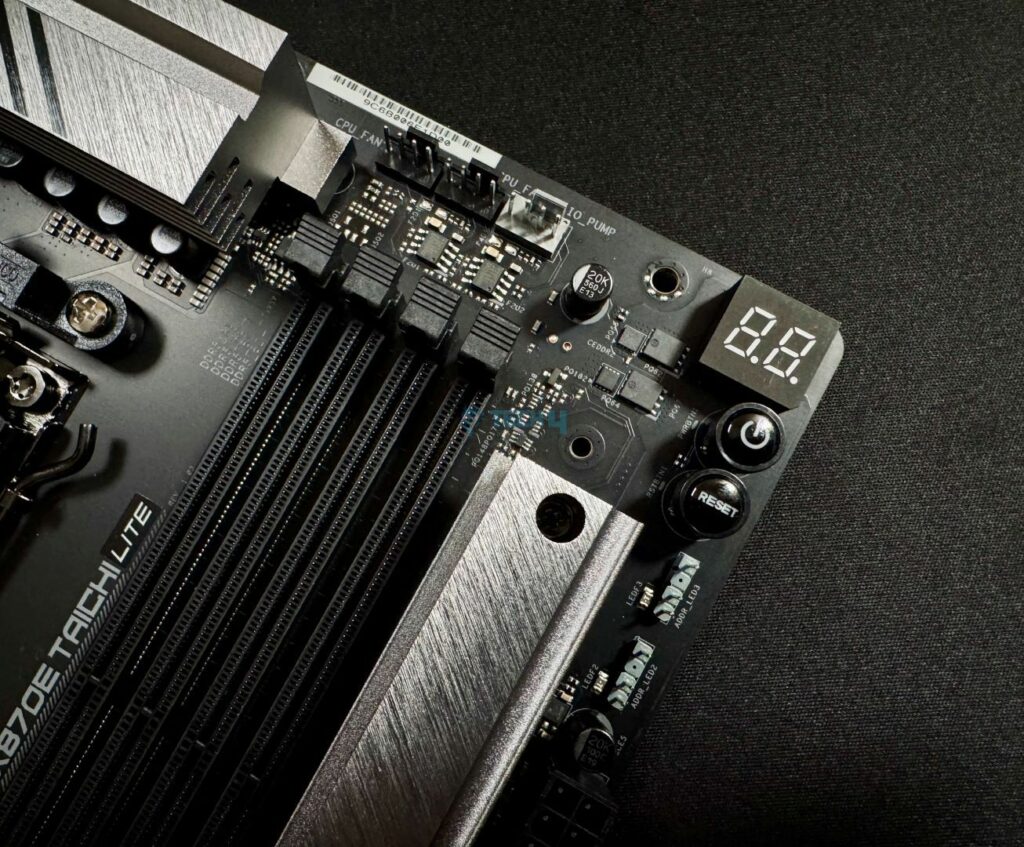
Up top, you can see CPU_FAN1, CPU_FAN2, and the AIO_PUMP connectors. Like the RGB LED header, CPU_FAN2, AIO_PUMP, W_PUMP (a connector for those more power-hungry pumps), and all the case fan headers provide up to 36W each. CPU_FAN1 can only power fans up to 12 watts. There’s much room for premium CPU cooling solutions should you want to install one.
From the corner and down, we see the Dr. Debug LED panel and reset and power buttons with LED.
ASRock’s Hi-Density dual EPS connectors and 24-pin ATX connectors can withstand more current than traditional connectors. This, coupled with the incredible VRM setup, should help us further with overclocking.
Rear I/O

For rear I/O, we have:
- 2 x Antenna Ports
- 1 x HDMI Port
- 1 x Optical SPDIF Out Port
- 2 x USB4 Type-C Ports (40 Gb/s)
- 5 x USB 3.2 Gen2 Type-A Ports (10 Gb/s)
- 3 x USB 3.2 Gen1 Type-A Ports
- 2 x USB 2.0 Ports
- 1 x RJ-45 LAN Port
- 1 x Clear CMOS Button
- 1 x BIOS Flashback Button
- 1 x Line Out Jack (Gold Audio Jack)
- 1 x Microphone Input Jack (Gold Audio Jack)
The yellow Type-A ports are “lightning gaming ports” for your keyboard and mouse. According to ASRock, two different controllers (USB and PCIe) are being used here, so the bus won’t be crowded, and latency will be minimal.
The dark blue ports above it support “Ultra USB power,” which features a dedicated IC to convert 12V power to 5V, protecting it from noise interruption from other 5V devices on the board.
Test Setup
- AMD Ryzen 9 9950X 16C/32T
- ARCTIC Liquid Freezer II 420 Liquid CPU Cooler
- G. Skill Trident Z5 Royal NEO DDR5-6000 CL28 EXPO Kit (2×16 = 32GB)
- XPG Lancer RGB 32GB 7200MHz DDR5 RAM
- Nvidia GeForce Gigabyte RTX 4090 Gaming OC
- Western Digital SN850 Black 500GB NVMe SSD [For OS]
- Sabrent Rocket 4 Plus 2TB Gen4x4 NVMe SSD [For Software]
- Sabrent Rocket 4 Plus 4TB Gen4x4 NVMe SSD [For Games]
- Sabrent Rocket NANO V2 4TB Portable SSD
- Corsair HX1200i Platinum PSU
- Windows 11 Pro Build 23H2
- BIOS Version 3.08
- AGESA 1.2.0.2 firmware
Synthetic Benchmarks
Let’s dive into the synthetic benchmarks first.

The Taichi Lite renders the scene in 50 seconds, the same as the X870E Carbon WiFi.

In the Cinebench 2024 multi-threaded test, the Taichi Lite top-scored, while single-core scores are identical among all three.

Our Taichi Lite is again the winner, specifically by a 0.5-second difference.

Again, all the motherboards are within close margins of each other, but the Taichi Lite takes the edge.

Another marginal victory for the Taichi Lite in Geekbench 6 (multi-threaded).

The MSI MPG X870E Carbon WiFi is the winner in V-Ray.
Overall, the motherboards perform very similarly, although the Taichi Lite topped almost all the charts.
Gaming Benchmarks
Here are the gaming charts.

The X870E Taichi Lite wins by one FPS on average.

The X870E Carbon WiFi did better on average, but the Taichi Lite’s lowest FPS drop was to 142, the best in the list.

The Taichi Lite and Carbon WiFi showed the same average FPS numbers, but the latter took a 1-FPS win in minimum FPS. The ASRock X870 Steel Legend WiFi fell a bit short of the two X870E boards.
All in all, the gaming performance of Taichi Lite is solid.
Windows 11 Boot Time

With identical test setups, the MPG X870E Carbon WiFi booted up a second quicker than the Taichi Lite and Steel Legend WiFi boards.
Power Consumption and VRM Temperatures

Our Taichi Lite setup consumed more power across all the workloads, maxing at 388 watts under the Cinebench 2024 multi-core load.

A thoroughly impressive VRM performance from Taichi Lite’s heatsink! Despite being the better VRM setup by a mile and higher power consumption, the motherboard stayed well under 60°C.
Should You Buy It?
Worth it?
Buy It If:
✅You want extreme overclocking for (relatively) cheap: This is one of the more affordable X870E motherboards out there so far. Its VRM setup competes with enthusiast options like the MSI X870E GODLIKE. The VRM cooling setup is equally impressive, as confirmed in our testing.
✅The latest I/O is a priority: With WiFi 7 and USB4 and improved memory support over the last generation, the motherboard offers the current greatest I/O connectivity.
✅You want a streamlined look: If you prefer sleek RGB-free designs, this motherboard offers a great look to match your setup.
✅You need plenty of USB ports: With 21 USB ports (including 2x 40Gbps, 1x 20Gbps, and 5x 10Gbps), there’s plenty of room for all your USB devices.
Don’t Buy It If:
❌X670E boards look more attractive: In all honesty, a previous-gen board will suit you best if you don’t need the handy I/O or extreme overclocking capabilities. Despite their great price tag, X670E boards can be far cheaper.
❌Your chassis is incompatible: The X870E is an E-ATX board and may not fit into your case. Make sure to check compatibility before purchasing.
My Final Thoughts
The ASRock X870E Taichi Lite comes out as a very attractive E-ATX board from AMD’s flagship chipset. Among its top features is its top-notch VRM setup, which features a 24+2+1 phase design with 110A stages. This is a setup capable–even overkill–for even the most powerful Ryzen CPUs. Rest assured, you can be sure that you’ll be able to push your CPU as far as you could possibly need, and VRM temperatures shouldn’t be a concern either, thanks to its excellent design.
The motherboard offers a distinctive design with multiple elements mixed together and features a black and silver theme. There’s no RGB, but the board can accommodate any RGB peripherals you may want to install, with 3x addressable headers and one standard header.
We have room for up to 256GB of DDR5 memory (max. 8200+ MT/s with OC). There’s also enough connectivity for just about any casual user. The board features dual PCIe 5.0 slots (x16/x8 and x0/x8) that are steel-reinforced and are mounted by SMT (surface-mount technology). Hence, the ports are very durable and should have no problems handling heavy GPUs.
The board offers four M.2 slots (including one PCIe 5.0 x4, the remaining being Gen 4 x4). If you have any SATA 6Gbps devices, the board can cover as many as six. The PCIe slots are cooled well by the dedicated heatsinks, and the primary (Gen 5) heatsink features a screwless removal mechanism.
There are 21 USB ports in total (including 2x USB4, of course), although six of these are USB 2.0 standard. Two ports support “Ultra USB Power” (a more stable 5V supply), and two are Lightning Gaming ports (minimal latency for your keyboard and mice). We get a WiFi 7 module, Bluetooth 5.4, and a 5G LAN port for networking. The audio setup features Realtek’s ALC4082 and a minimal-noise DAC.
Other nice-to-haves of the board are the three included thermistor cables, the debug LED panel, anti-drop M.2 heatsink screws, and Nahimic audio drivers. The motherboard costs $399, an intermediate price for an X870E motherboard.
Community Poll
Thank you! Please share your positive feedback. 🔋
How could we improve this post? Please Help us. 😔
[Reviews Specialist]
Usman Saleem brings 8+ years of comprehensive PC hardware expertise to the table. His journey in the tech world has involved in-depth tech analysis and insightful PC hardware reviews, perfecting over 6+ years of dedicated work. Usman’s commitment to staying authentic and relevant in the field is underscored by many professional certifications, including a recent one in Google IT Support Specialization.
8+ years of specialized PC hardware coverage
6+ years of in-depth PC hardware analysis and reviews
Lead PC hardware expert across multiple tech journalism platforms
Certified in Google IT Support Specialization
Get In Touch: usman@old.tech4gamers.com
 Threads
Threads
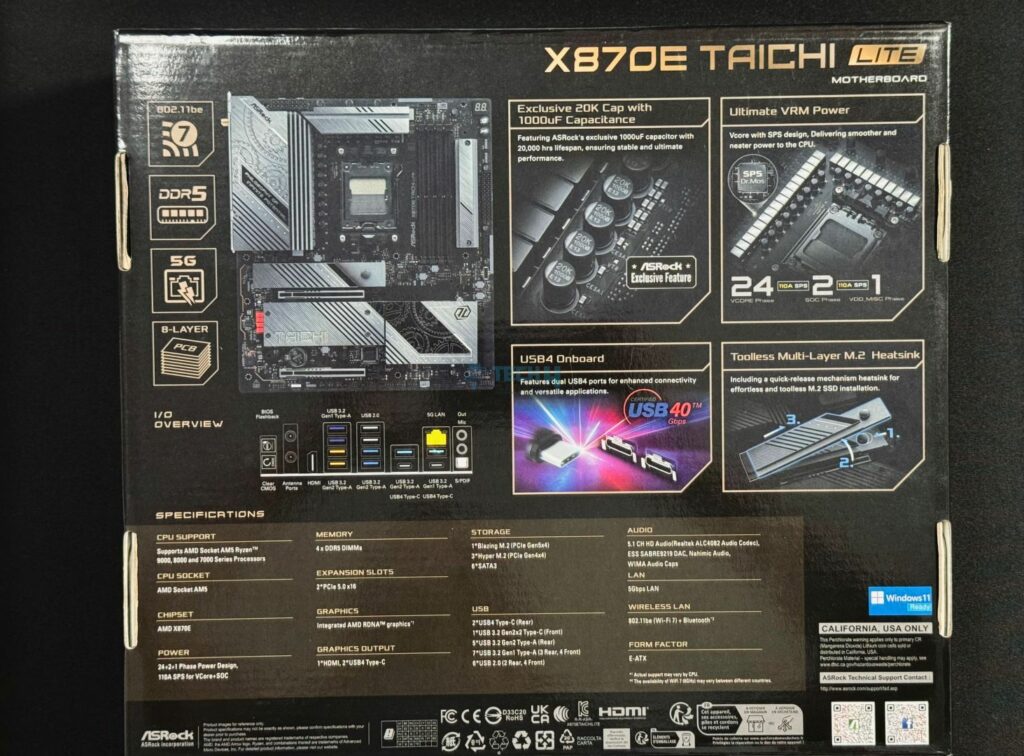

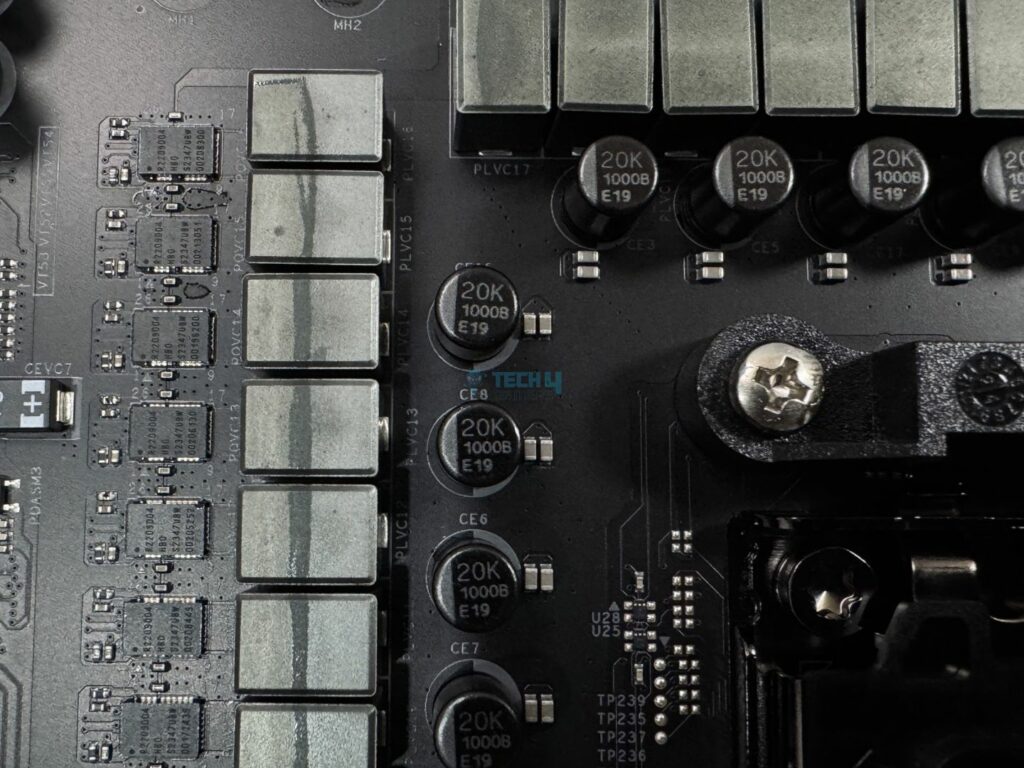





![The Best Motherboards For i5-14600K [Tested & Compared] Best Motherboard For i5-14600K](https://old.tech4gamers.com/wp-content/uploads/2023/10/Best-Motherboard-For-i5-14600K-218x150.jpg)
![The 6 Best X570 Motherboards [Updated] Best X570 Motherboard](https://old.tech4gamers.com/wp-content/uploads/2021/12/best-x570-motherboard-218x150.jpg)
![6 BEST Motherboards For Ryzen 9 7900X3D [Tried & Tested] Best Motherboard For Ryzen 9 7900X3D](https://old.tech4gamers.com/wp-content/uploads/2023/02/Best-Motherboard-For-Ryzen-9-7900X3D-218x150.jpg)




